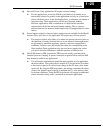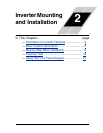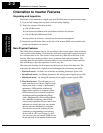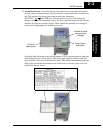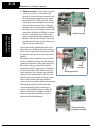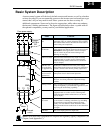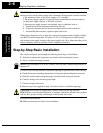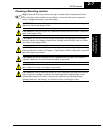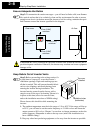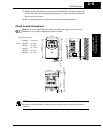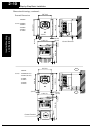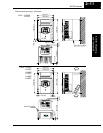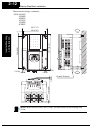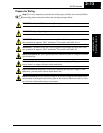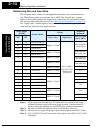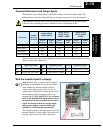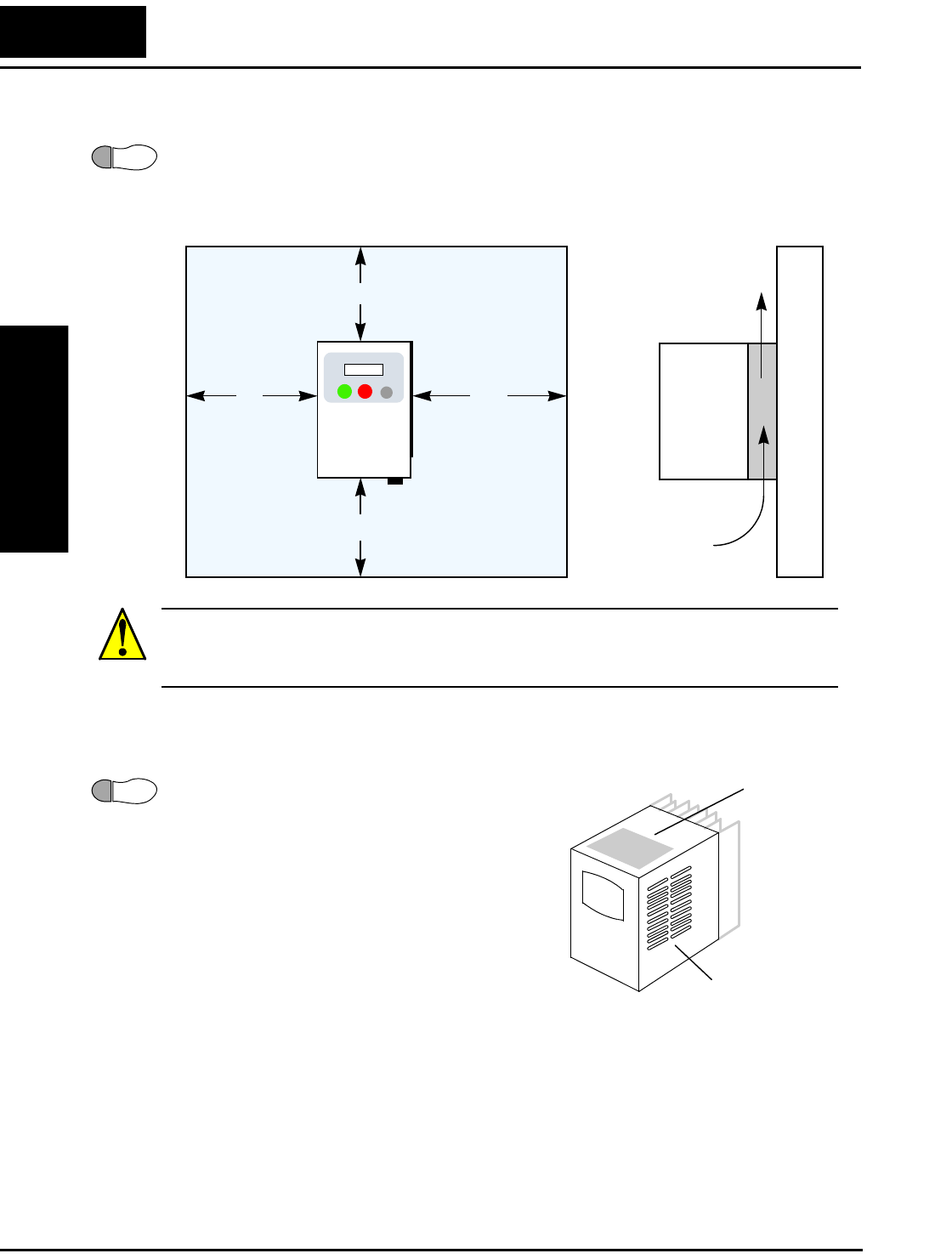
Step-by-Step Basic Installation
Inverter Mounting
and Installation
2–8
Ensure Adequate Ventilation
Step 2: To summarize the caution messages—you will need to find a solid, non-flamma-
ble, vertical surface that is in a relatively clean and dry environment. In order to ensure
enough room for air circulation around the inverter to aid in cooling, maintain the speci-
fied clearance around the inverter specified in the diagram.
CAUTION: Be sure to maintain the specified clearance area around the inverter and to
provide adequate ventilation. Otherwise, the inverter may overheat and cause equipment
damage or fire.
Keep Debris Out of Inverter Vents
Step 3: Before proceeding to the wiring section, it’s
a good time to temporarily cover the inverter’s
ventilation openings. Paper and masking tape are
all that is needed. This will prevent harmful debris
such as wire clippings and metal shavings from
entering the inverter during installation. The
inverter housing comes from the factory with a
snap-in cover on the top of its housing. Ensure it is
in place at this time (also to be removed later,
unless the installation must have a NEMA rating).
Please observe this checklist while mounting the
inverter:
1. The ambient temperature must be in the range of -10 to 40°C. If the range will be up
to 50°C, you will need to set the carrier frequency to 2.1 kHz or less and derate the
output current to 80% or less. Chapter 3 covers how to change parameters such as the
carrier frequency. Remember to remove the top cover (unless the installation is to
have a NEMA rating)!
2. Keep any other heat-producing equipment as far away from the inverter as possible.
2
8 cm (3.15”)
minimum
10 cm (3.94”)
minimum
12 cm (4.72”)
minimum
10 cm (3.94”)
minimum
SJ100
Clear area
Air flow
3
Top c ove r
installed
Ventilation holes
(both sides)



